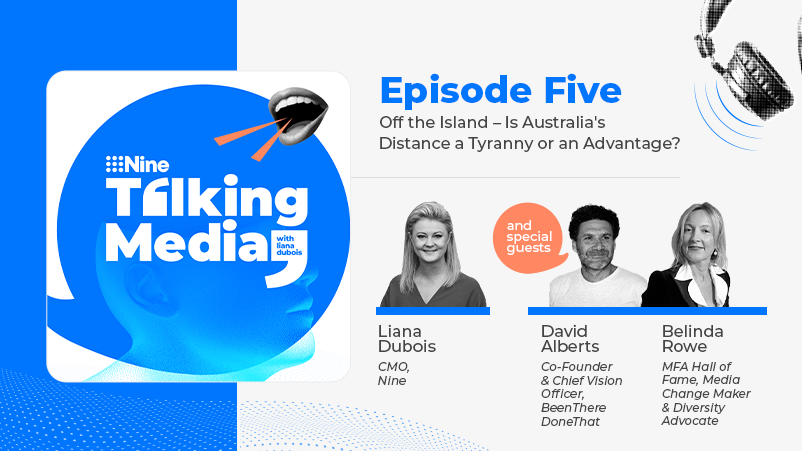Australian business leaders are losing control of their organisations – and consultancies are to blame
There's a major discrepancy between CEOs and CMOs regarding how a customer influences their business strategy. Agencies can shoulder some share of the blame. But an army of consultancies targeting and isolating CEOs – and peddling a deluge of data, strategy and reports – have created an epidemic of complexity for Australian business leaders. Funnily enough, while creating more work for themselves. Lowercase Advisory MD Matt Morgan says something has to give.
The gap between CEOs and their leadership teams is widening.
Recently, The Wall Street Journal exposed the growing gap between CEOs and their CMOs, with only 50 per cent of CEOs giving the same answer as their CMO regarding the role of marketing within their business.
There's a major discrepancy between CEOs and CMOs regarding how a customer influences their business strategy: 90 per cent of CEOs think it's customer-driven, while only 58 per cent of CMOs agree, according to Forrester.
Forrester's survey also highlights a divide when it comes to meeting consumer needs: 97 per cent of CEOs believe their company is doing well in this area, compared to only 75 per cent of top marketers.
These findings echo a pattern I’ve seen throughout my career.
Over the past decade, I’ve seen this gap play out not just between CEOs and their CMOs, but in their entire business, from product and customer care teams through to technology departments.
If an entire organisation isn’t aligned to a single ‘commander’s intent’, it leads to inconsistent decision-making across the entire business – and inconsistent brand experiences.
Why does it matter?
The decisions that junior and mid-level employees make are typically the decisions that impact the customer most. So, if an organisation isn’t making decisions with the CEO’s intent in mind, can a leader really be in control of how a customer experiences their business?
To make matters worse, this gap between CEOs and the rest of their business is being exploited by traditional consultancies for their own gain.
In the last year, many of the big consulting firms’ illegal and unethical business practices have come to light, starting with PwC’s tax scandal, which led to inquiries that also exposed Deloitte’s misuse of confidential government information and McKinsey’s lies about its toxic culture of bullying and sexual assault.
As more of these scandals continue to come to light, the everyday business practices of the ‘Big Four’ designed to drive up profit margins have been relegated to the sidelines.
Consultancies deliberately target and isolate CEOs, before drowning them in mountains of data. Profits come from keeping leaders in the indefinite weeds of strategy rather than tactical implementation. Furthermore, the wheeling out of shiny category insight reports adds to the complexity, keeping leaders distracted from the real priority: their customers.
Consultancies peddling a deluge of data, strategy and reports have created an epidemic of complexity for Australian business leaders.
As this complexity increases, understandability and unpredictability increases, meaning leaders lose grasp of how all the elements of their organisation consistently fit together.
In other words, complexity widens the gap.
Whilst CEOs can afford the luxury of focusing on strategy and big picture thinking, the rest of the organisation cannot. In most businesses I’ve worked with, consultancies profit from slowing down the path to implementation, so it’s no wonder department heads look elsewhere and turn to agencies to ‘get shit done’.
As an ex-agency man myself, I can confirm agencies are very good at ‘getting shit done’. Trouble is, the things getting done are rarely aligned with the CEO’s intent, or even consistent with what the rest of the business is doing. Rather than helping remove silos and align decision making, they only add to the complexity and inconsistency.
But what do you expect when the traditional agency village model is based on outcome bias?
Outcome bias dictates that whatever problem, objective, or opportunity a business has, the products and services an agency sells are the answer. Multiply that across an average of eight third-party agency partners, and it’s easy to see where the problems begin. Both strategy and implementation will be heavily skewed towards whatever services an agency wants to sell, rather than the CEOs vision or the needs of the customer.
This has led to hubris amongst creative agencies who peddle advertising as the answer to product or CX challenges, and arrogance within CX agencies who belittle the role of brand strategy. Outcome bias has also led to the big steal of marketing dollars by martech companies, who leverage complexity to overstate technology’s role in solving customer problems. Organisations have denied themselves competitive advantage by trading it for the overstated outcome bias of a single technology vendor.
Put simply, outcome bias leads to the hard sell of more, more, more. What ‘more’ is, and whether it’s right for the customer becomes irrelevant. And there’s always ‘more’ to be done.
The act of listening to the customer often exposes what businesses shouldn’t be doing, but time and time again, that’s drowned out by the drum of ‘more’. Consultancies are isolating CEOs with an endless list of strategic possibilities, and agencies are drowning department heads with a tidal wave of biased solutions.
The result? Inconsistent brand experiences that don’t live up to the brand promise or meet customers’ needs and brands that, to a customer, feel nothing like a CEO’s vision.
Quite frankly, I’ve seen enough.
Instead of adding more, we need to do less better. Instead of being drowned in the weeds of strategy by MBA wielding consultants (whose business strategies could now be outmatched by AI), we need to find our way back to intuitive practice of listening to our customers.
And if Forrester’s findings are anything to go by, killing complexity by listening to both employees and customers once more is something Australian business leaders need more than ever before.



